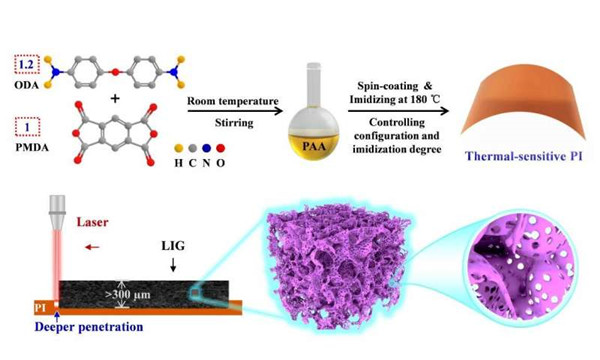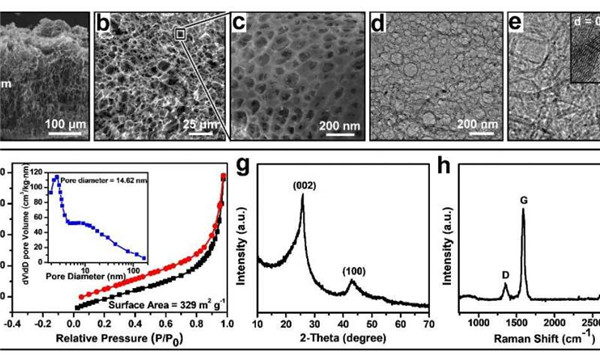

Recently, a research group led by Prof. Wang Zhenyang from the Institute of Solid State Physics of the Hefei Institutes of Physical Science (HFIPS) reported a novel method to prepare high-performance supercapacitors with ultra-high energy storage density.
Constructing 3-D graphene frameworks with ultra-thickness and rich ion transport paths is of great significance for the practical application of graphene supercapacitors. However, in thicker electrodes, the overallenergy storage capability is limited by insufficient delivery of ions to the electrode material surface and the poor electron transport properties.
In this work, laser-induced ultra-thick 3-D graphene frameworks, with thickness up to 320 μm, were directly grown on the synthesized polyimide by optimizing the thermal sensitivity of polyimide to increase laser penetration depth. Thus, hierarchical pores were obtained due to the fast liberation of gaseous products during laser radiation, which facilitated fast ion transport.
This new structure well balanced the contradiction between electrodethickness and fast ion transport. Pseudocapacitive polypyrrole was further introduced into the graphene frameworks to prepare composite electrodes, which show specific capacitances as high as 2412.2 mF cm-2 at 0.5 mA cm-2.

Accordingly, flexible solid-state micro-supercapacitors were constructed with a high energy density of 134.4 μWh cm-2 at a power density of 325 μW cm-2.
These results show that these ultra-thick graphene electrodes hold great potential in the application of supercapacitors which promise high energy storage density.

Fig.3. Electrochemical performance of the supercapacitors. Credit: LI Nian